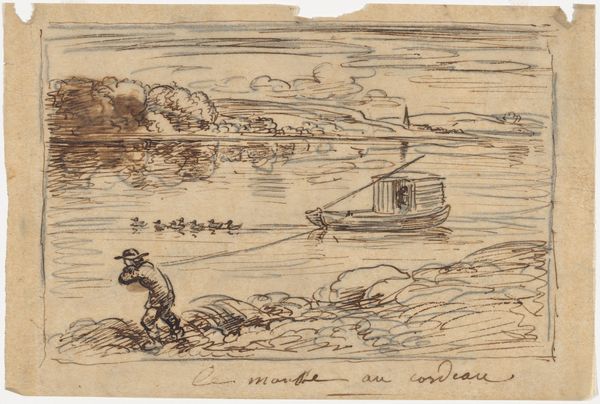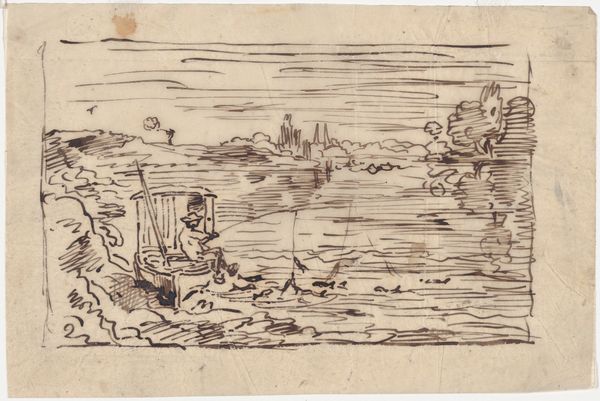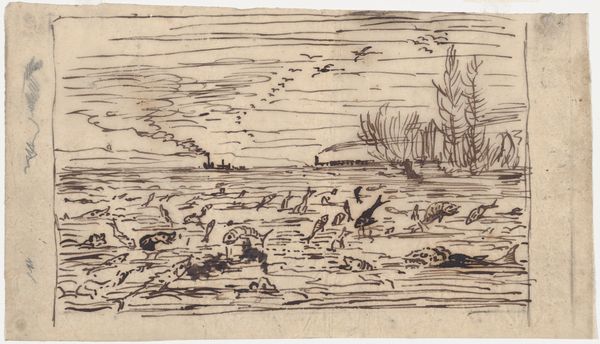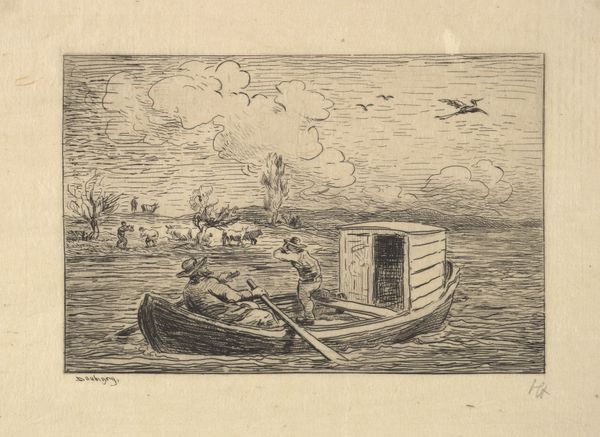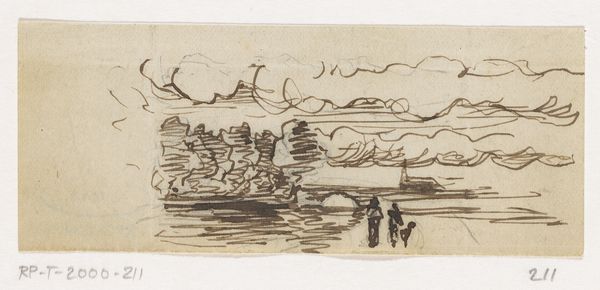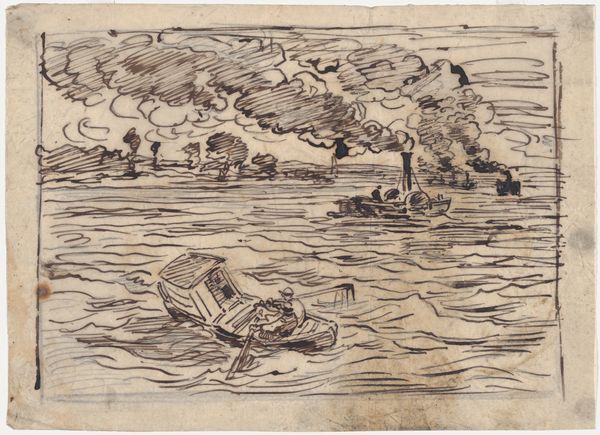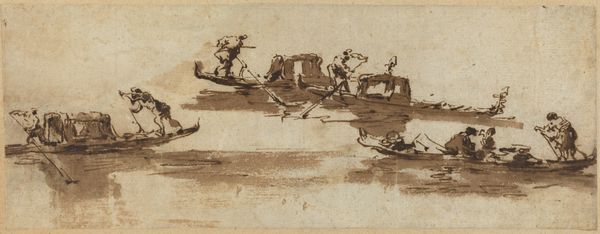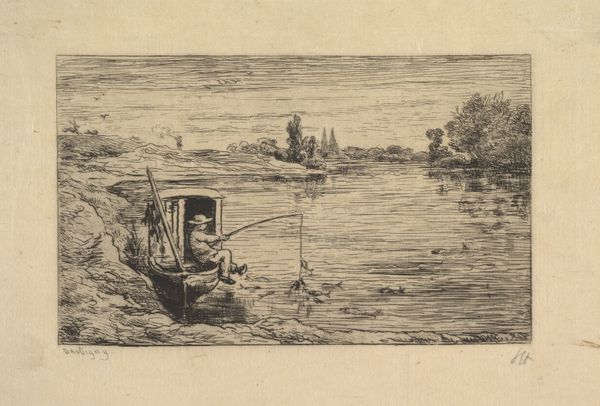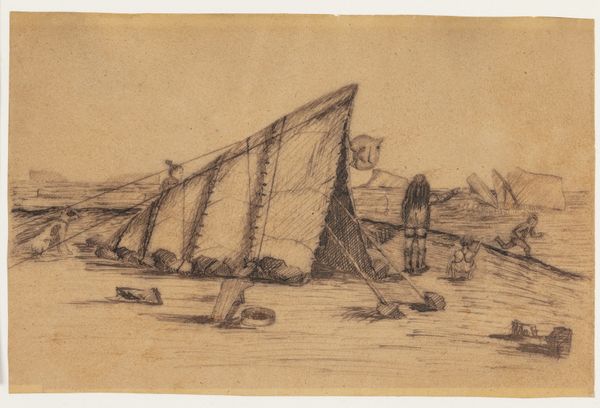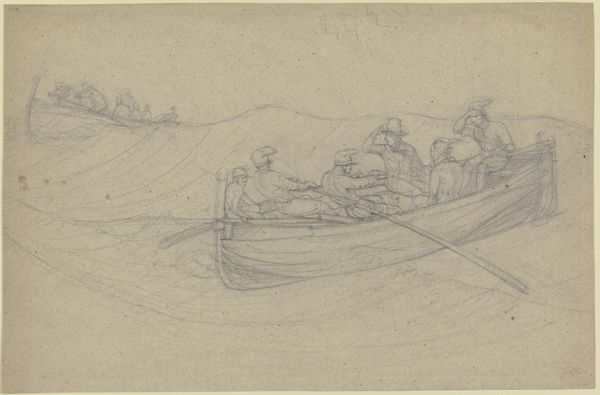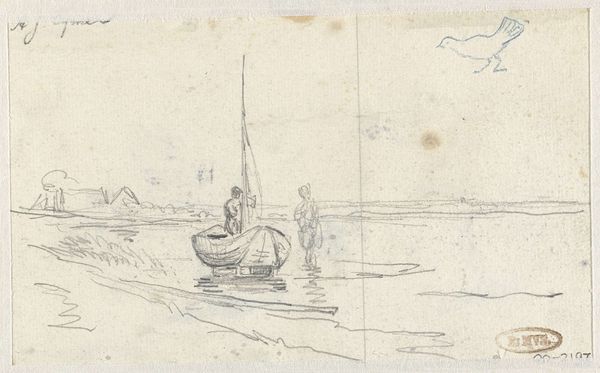
Dimensions: Sheet: 5 3/16 × 7 1/4 in. (13.1 × 18.4 cm)
Copyright: Public Domain
Curator: Let's turn our attention to Charles-François Daubigny’s drawing from 1862, "The Broken Oar," currently residing here at the Metropolitan Museum of Art. Editor: What immediately strikes me is the apparent chaos within such a confined space. You've got figures tumbling, the titular broken oar, and the frenzied pen work that really captures a moment of…well, not disaster, but certainly significant inconvenience! Curator: It's worth considering that this was a plein-air sketch, meant to quickly capture a scene from life, very much in line with the burgeoning Barbizon school of painting's commitment to depicting the everyday life of the French countryside. Editor: Absolutely. And the roughness, the sketchiness...it underscores the labor of leisure, if that makes sense. We see the materiality of this pursuit – broken tools, crowded conditions on the water. It takes the idyllic out of the landscape, to some extent. Pen, ink, and wash on toned paper—humble materials for a down-to-earth subject. Curator: The fact that Daubigny would dedicate an artwork to something so seemingly insignificant as a broken oar speaks to shifting artistic values in the mid-19th century. Moving away from grand history paintings to intimate scenes of contemporary life reflects a democratizing impulse in art production and reception. Editor: True. One could also consider the availability and transportability of these materials. The democratization you mention has roots in easier access. Think about how industrial production of paper and ink impacted the kinds of art that were made and who made them. Also the hierarchy starts blurring a little if an artist known for landscapes will focus its production in craft processes? Curator: A salient point about the medium's importance. Daubigny’s broader artistic project was to champion this sort of unassuming representation of landscape and rural life. The political undercurrent of Romanticism! He aimed to ennoble the common experience. Editor: Ultimately, though, I can’t help but feel a bit of empathy for whoever’s about to take an unexpected swim! The composition seems tilted precariously towards imbalance... almost as if the boat itself is about to tip. Curator: A perfect visual metaphor for the instability of life itself, perhaps! Looking at "The Broken Oar," it is evident how a moment of quiet reflection or simple outdoor task becomes material to investigate artistic progress through close observation. Editor: Yes, there's certainly a tactile immediacy that connects us directly to Daubigny's experience. A potent reminder that even the grandest artistic visions start with simple things, with available materials and the grit of everyday reality.
Comments
No comments
Be the first to comment and join the conversation on the ultimate creative platform.
